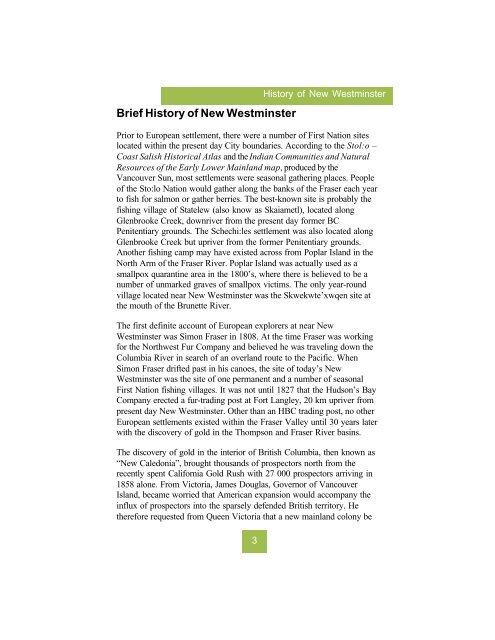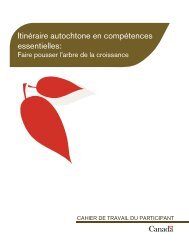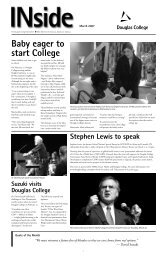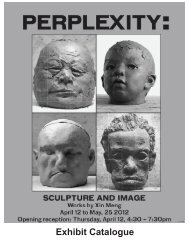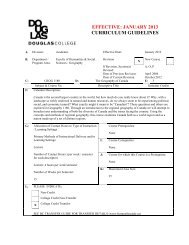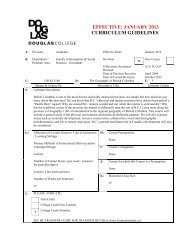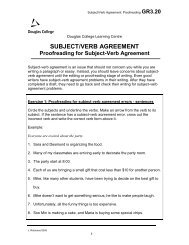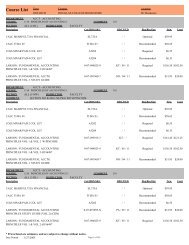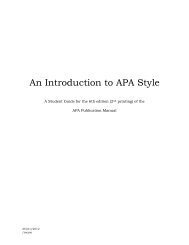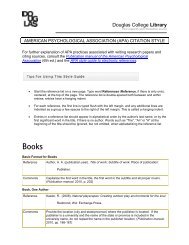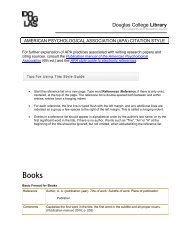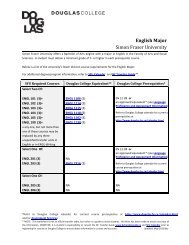New Westminster Environmental Almanac (2917 ... - Douglas College
New Westminster Environmental Almanac (2917 ... - Douglas College
New Westminster Environmental Almanac (2917 ... - Douglas College
You also want an ePaper? Increase the reach of your titles
YUMPU automatically turns print PDFs into web optimized ePapers that Google loves.
Brief History of <strong>New</strong> <strong>Westminster</strong><br />
Prior to European settlement, there were a number of First Nation sites<br />
located within the present day City boundaries. According to the Stol:o –<br />
Coast Salish Historical Atlas and the Indian Communities and Natural<br />
Resources of the Early Lower Mainland map, produced by the<br />
Vancouver Sun, most settlements were seasonal gathering places. People<br />
of the Sto:lo Nation would gather along the banks of the Fraser each year<br />
to fish for salmon or gather berries. The best-known site is probably the<br />
fishing village of Statelew (also know as Skaiametl), located along<br />
Glenbrooke Creek, downriver from the present day former BC<br />
Penitentiary grounds. The Schechi:les settlement was also located along<br />
Glenbrooke Creek but upriver from the former Penitentiary grounds.<br />
Another fishing camp may have existed across from Poplar Island in the<br />
North Arm of the Fraser River. Poplar Island was actually used as a<br />
smallpox quarantine area in the 1800’s, where there is believed to be a<br />
number of unmarked graves of smallpox victims. The only year-round<br />
village located near <strong>New</strong> <strong>Westminster</strong> was the Skwekwte’xwqen site at<br />
the mouth of the Brunette River.<br />
The first definite account of European explorers at near <strong>New</strong><br />
<strong>Westminster</strong> was Simon Fraser in 1808. At the time Fraser was working<br />
for the Northwest Fur Company and believed he was traveling down the<br />
Columbia River in search of an overland route to the Pacific. When<br />
Simon Fraser drifted past in his canoes, the site of today’s <strong>New</strong><br />
<strong>Westminster</strong> was the site of one permanent and a number of seasonal<br />
First Nation fishing villages. It was not until 1827 that the Hudson’s Bay<br />
Company erected a fur-trading post at Fort Langley, 20 km upriver from<br />
present day <strong>New</strong> <strong>Westminster</strong>. Other than an HBC trading post, no other<br />
European settlements existed within the Fraser Valley until 30 years later<br />
with the discovery of gold in the Thompson and Fraser River basins.<br />
The discovery of gold in the interior of British Columbia, then known as<br />
“<strong>New</strong> Caledonia”, brought thousands of prospectors north from the<br />
recently spent California Gold Rush with 27 000 prospectors arriving in<br />
1858 alone. From Victoria, James <strong>Douglas</strong>, Governor of Vancouver<br />
Island, became worried that American expansion would accompany the<br />
influx of prospectors into the sparsely defended British territory. He<br />
therefore requested from Queen Victoria that a new mainland colony be<br />
3<br />
History of <strong>New</strong> <strong>Westminster</strong>


